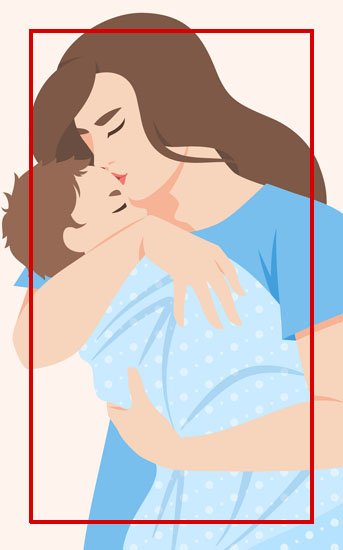


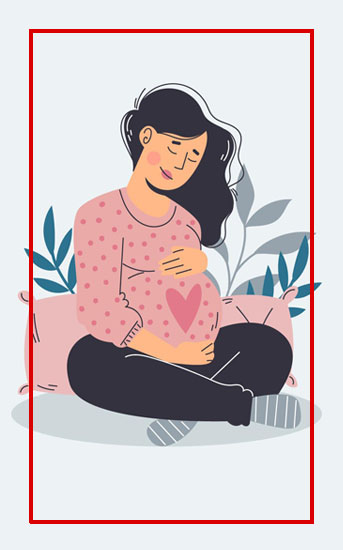
Remedy Hospital Department of
Obstetrics & Gynaecology
The department of Obstetrics and Gynaecology here provides complete treatment for any kind of obstetric and gynaecological requirements. The department offers comprehensive women care including high-end obstetrics and gynaecological services for women of all ages. Remedy offers, state-of-the-art healthcare facilities and a dedicated team of some of the best obstetricians and gynaecologists of Kolkata. You can rest assured that you are in safe and knowledgeable hands.
We offer:
- Comprehensive treatment options for laparoscopy Gynaecology.
- We carry out a wide array of procedures with a lot of success, including Ovarian cystectomy, Hysterectomy, Ligation, Tubectomy, Ovarian cyst, Hysteroscopy (Fundamental Biopsy, endometrial Biopsy, Removal of polyp) etc.
- Remedy ICU is well equipped to take care of High-risk pregnancies including critical patients of Obstetrics & Gynae.
- The Department comprises of well-equipped 7 Bedded Neonatal Intensive care. (NICU).
Remedy Maternity Unit
Giving birth to a new born is an exciting experience that can also be overwhelming. With Remedy Hospital by your side, go confidently in the direction of your dream to be a happy parent. Our team of best obstetricians, gynaecologists, nursing staff and caregivers make sure you receive excellent care from admission to discharge.
Remedy Hospital is the answer to all your maternity requirements. During anxious times, place your trust in us. Our experienced Doctors and staff guide you through the miraculous journey of welcoming a healthy, gurgling baby into this world. Remedy has been successfully delivering healthy babies into the hands of delighted parents.
We, at Remedy Hospital, aim at gifting you happy and memorable experiences around pregnancy, labour and birth. Remedy Hospital is an ideal maternity care centre for women because of its highly personalized care and affordable cost.
Faq"s
Frequently Ask Questions
Don’ts: Paint- Let somebody else paint the baby’s room. Pregnant women shouldn’t be exposed to toxic substances and chemicals, which include paint and cleaning solvents. Get an X-ray- Get an X-ray only if necessary. It is highly advised to avoid tests like X-rays and mammograms while pregnant because they can be dangerous to your growing baby. If you need to have an X-ray, make sure that your doctor knows you are pregnant so they can take extra precautions.
Blood Test – This is a double marker test in which the amount of two chemical substances present in the blood of the mother is measured. This is performed between 10th to 13th weeks of pregnancy.
Ultrasound scan – This is Nuchal Translucency (NT) scan which is performed between the 11th to 19th week of pregnancy.
After both the tests are completed, the results from both are combined with the age to estimate the probability of the unborn baby being affected by the condition.
If you are past the 13th week of pregnancy and didn’t have the double marker test conducted in the first trimester, you can have the risk assessment done through a blood test. This is known as a Quadruple marker test which can be performed between the 15th and 21st week of pregnancy.
A diagnostic test will need to be conducted for getting a definitive result on whether the baby has Down’s syndrome or not. This test is mostly conducted only when there is an increased risk of a miscarriage or pregnancy loss in the screening test.
If the result of the screening test was lower than the cut off value of 1:1250, it means a screen negative or low risk result. However, it doesn’t mean that there is no risk. It simply means that the probability of your baby having this condition is extremely low. If there is no other medical reason, you won’t have to undergo a diagnostic test. If you still want to get a confirmation on the genetic makeup of the baby, you can still opt for the diagnostic test.
“HIGH RISK” or “SCREEN POSITIVE” (Less than 5% i.e., 1 in 20 women)
If the result of the screening test is more than the cut off value of 1:250, it means that there is a screen positive or high risk result. After this, you will either have to go through a Non-Invasive Prenatal Testing (NIPT) or a diagnostic test. However, it is your decision to have a diagnostic test or not. The diagnostic test won’t have a risk to your pregnancy but will leave some uncertainty until the baby is born. If you decide to go through the diagnostic test, make sure that you have all the information regarding the tests. You will get a definitive answer through the diagnostic tests but there will be a small risk of miscarriage.
If none of the above options suit you, you can try the early anomaly scan that is one between the 16th and 18th week of pregnancy. Or, you can go for the routine detailed anomaly scan that is performed between the 18th and 20th week of pregnancy.
Diagnostic tests for Down’s syndrome
For Down’s syndrome, there are two diagnostic tests available:
CVS (Chorionic Villus Sampling) – In this test, the cells from the placenta are taken and analyzed to check for the condition in the fetal chromosomes. In most cases, this diagnostic test is conducted between the 10th and 13th week of pregnancy, i.e. in the first trimester. Also, the risk of miscarriage or pregnancy loss from this test is very low.
Amniocentesis – In this test, amniotic fluid sample is taken that surrounds the fetus. A needle is used to draw out this fluid from the mother’s uterus. The sample is used to analyze the fetus’s chromosomes. This test is conducted after the 15th week of pregnancy, i.e. in the second trimester. With this test also there is a low risk of miscarriage. If a couple has undergone in-vitro fertilization and they are at a higher risk of passing the genetic condition, preimplantation genetic diagnosis is performed so that the embryo can be tested for any genetic abnormalities.
Decide that they don’t want to continue the pregnancy and choose to abort. Discuss the health consequences of abortion with the doctor.
Decide that they want to have a baby. If you have selected this, you need to make a plan and prepare yourself with the extra challenges that come with raising a child with Down’s syndrome.
Fibroids and polyps
Adenomyosis
Irregular ovulation—If you do not ovulate regularly, areas of the endometrium (the lining of the uterus) can become too thick. This condition is common during puberty and perimenopause. It also can occur in women with certain medical conditions, such as polycystic ovary syndrome (PCOS) and hypothyroidism.
Bleeding disorders—When the blood does not clot properly, it can cause heavy bleeding.
Medications—Blood thinners and aspirin can cause heavy menstrual bleeding. The copper intrauterine device (IUD) can cause heavier menstrual bleeding, especially during the first year of use.
Cancer—Heavy menstrual bleeding can be an early sign of endometrial cancer. Most cases of endometrial cancer are diagnosed in women in their mid-60s who are past menopause. It often is diagnosed at an early stage when treatment is the most effective.
Other causes—Endometriosis can cause heavy menstrual bleeding. Other causes include those related to pregnancy, such as ectopic pregnancy and miscarriage. Pelvic inflammatory disease (PID) also can cause heavy menstrual bleeding. Sometimes, the cause is not known.
Endometrial ablation destroys the lining of the uterus. It stops or reduces menstrual bleeding. Pregnancy is not likely after ablation, but it can happen. If it does, the risk of serious complications is greatly increased. You will need to use a birth control method until after menopause following endometrial ablation. Sterilization (permanent birth control) may be a good option to prevent pregnancy for women having ablation. Endometrial ablation should be considered only after medication or other therapies have not worked.
Uterine artery embolization (UAE) is used to treat fibroids. In UAE, the blood vessels to the uterus are blocked, which stops the blood flow that allows fibroids to grow.
Myomectomy is surgery to remove fibroids without removing the uterus. Hysteroscopy can be used to remove fibroids or stop bleeding caused by fibroids in some cases.
Hysteroscopy can be used to remove fibroids or stop bleeding caused by fibroids in some cases.
Hysterectomy is surgical removal of the uterus. Hysterectomy is used to treat fibroids and adenomyosis when other types of treatment have failed or are not an option. It also is used to treat e What are the common symptom of fibroids?
The most common symptoms that occurs due to fibroids include, heavy menstrual bleeding, pelvic pressure, pain, and back ache.
Cervix, uterus or ovary cancer
Multiple uterine fibroids
Heavy periods
Endometriosis
Uterine prolapse
Adenomyosis
Our Speciality
Why Choose Us
Remedy is committed to providing high quality, cost-efficient healthcare in its hospitals and clinics.

Experienced Team of Obstetrician & Gynecologist

Best in Class Maternity Services

Well Equipped ICU & NICU To Take Care High Risk Pregnancy

Expert Nurses and Caregivers Round the Clock

Comprehensive Treatment Options for Laparoscopy Gynaecology

Advance Prenatal Screening Facilities

Fully Equipped 24/7 Ambulance Service

Affordable Delivery Package
Experience World Class Care & Facilities
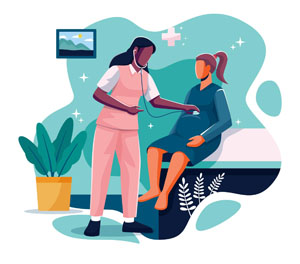
LABOUR & DELIVERY ROOMS
1. Fully equipped LDR (labour delivery room) with all medical facilities necessary for safest delivery.2. LDRs are designed with soft, soothing colours and ensure absolute privacy.
3. Advanced fetal monitoring system.
4. Fully equipped to handle high risk cases and care for new-borns.
5. Deliveries assisted by trained nurses.
6. Mothers can enjoy comfortable atmosphere during their hospital stay.
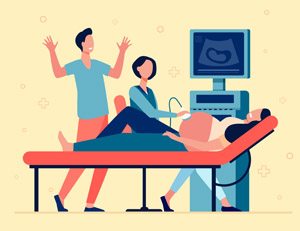
AFFORDABLE PACKAGES
1. Caesarean Section (Excluding Baby Cot)- Rs. 620002. Delivery Normal (Excluding Baby Cot)- Rs. 52400
3. Hysterectomy- Rs.56000
4. Hysteroscopic Guided Endometrial Biopsy- Rs.20600
5. Ovarian Cystectomy- RS 44500
T&C Applied
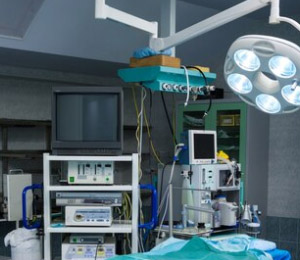
OPERATION THEATRES
1. O.T is equipped with all ultramodern facilities to handle even the most complex pregnancy and gynaecological cases2. Specially designed operating tables, advanced anaesthesia workstations and monitoring and advanced medical equipment help us to ensure that you and your new born baby are always in safe hands.
3. Our post-operative wards are equipped with latest ventilators and advanced monitoring systems providing our patient’s focused post-operative care.
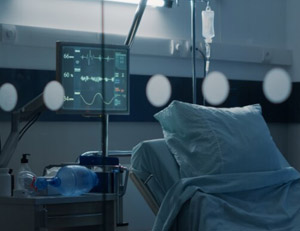
POST OPERATIVE CARE
We have excellent post operative care and for high-risk cases, a dedicated post operative ICU is also available.We have different types of rooms to suit your needs
We understand your need for comfort, privacy, preferences, budget and care and have various categories of rooms with the following:
Please select the location and category of the room in the module below and use it to fill in the delivery cost estimator.
53 +
Total Doctor
17650+
Cured
95%
Success Rate
80%
Satisfaction
Our
Patient Experience

17 Sep 2021
Best Hospitality have seen till now by any hospital. Doctors, nurses and supporting staff are so caring and helpful. As a team, they really bring the commitment to real platform. We blessed with a baby girl on 05/09/2021 and the way Team taken care of my wife and baby is really remarkable.
Rahul Das

14 Jun 2021
Hospital is really good for delivery and child care. My son born on 4th June 21. All the stuffs and nurses are well trained for handling the mother and child both. And facility and infrastructure wise hospital is really well equipped specifically for child health, I’ll definitely recommend them.
Sneha Mishra
Admission Assists
